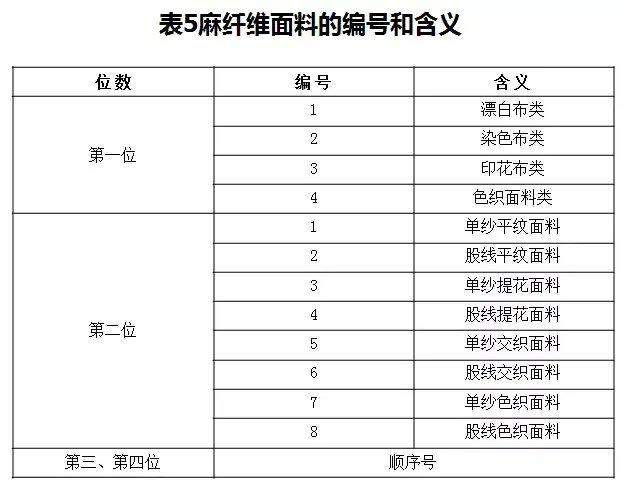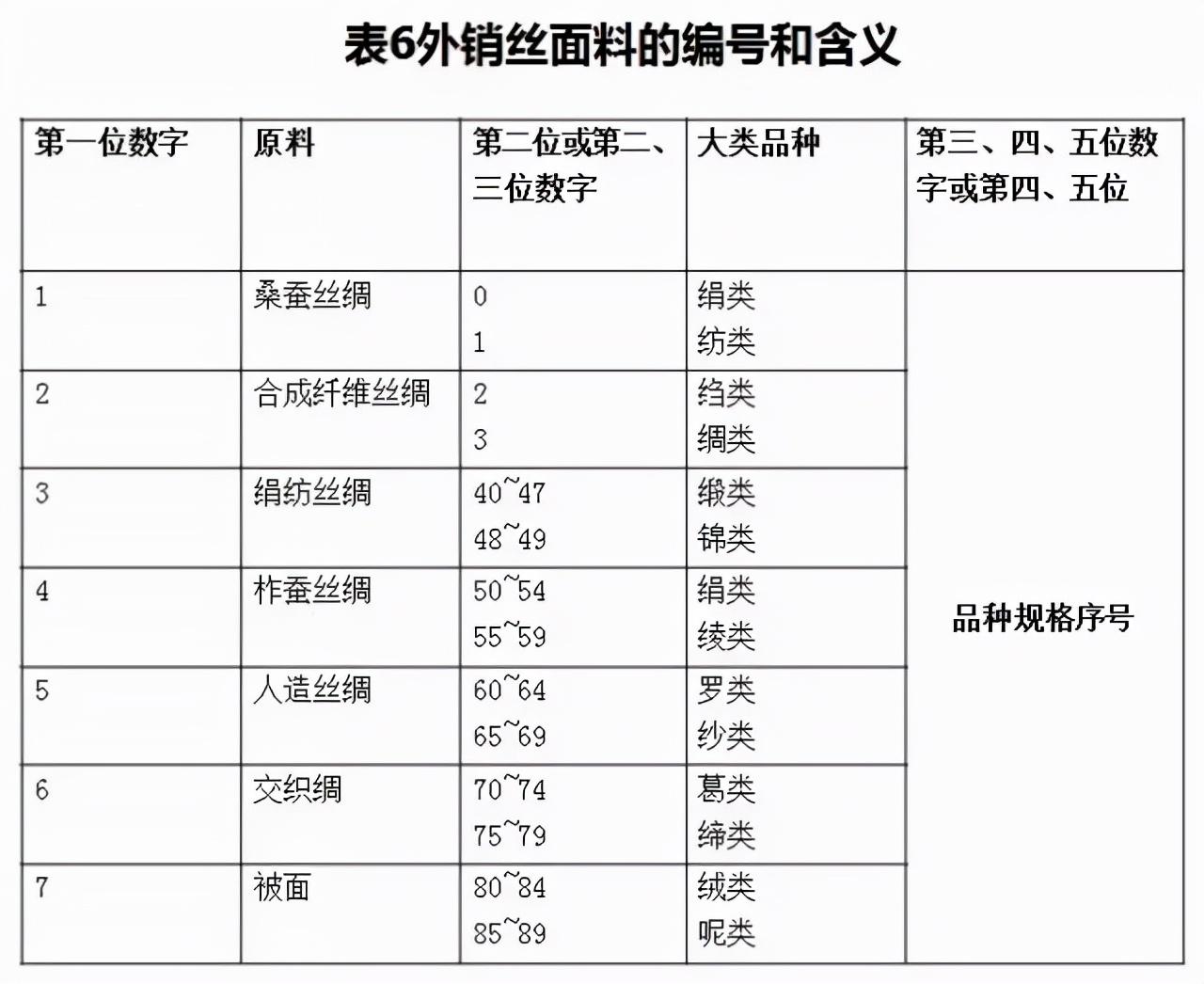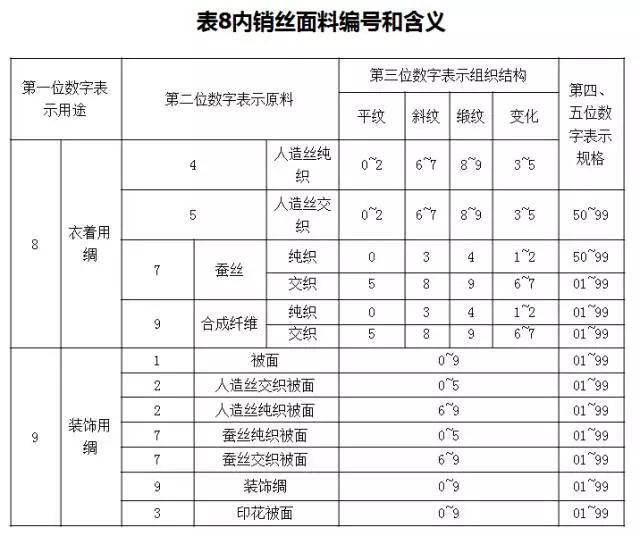As a practitioner in the textile industry who often needs to deal with fabrics, you need to be familiar with the numbering and meaning of textile fabrics. Only in this way can you be handy at work. The editor has sorted out the numbering methods and meanings of the main fabrics. Have you mastered these?
1
The numbering method and meaning of cotton fiber fabrics
The number of cotton fiber fabrics is used to indicate the category of the fabric. It can be divided into two types: the number of natural cotton fiber fabrics and the number of printed and dyed cotton fiber fabrics.
1. Number of natural cotton fiber fabric
The number of natural cotton fiber fabrics consists of three digits. The first digit indicates the variety category, and the second and third digits indicate the sequence number.

For example, the cotton fiber fabric number is “642”, the first digit “6” indicates that the cotton fiber fabric is khaki; the second and third digits The number “42” represents the sequence number of the khaki variety.
2. Number of printed and dyed cotton fiber fabrics
The number of printed and dyed cotton fiber fabrics consists of four digits. The first digit indicates the processing category, and the last three digits indicate the number of the natural cotton fiber fabric.

For example, the number of printed and dyed cotton fiber fabric is “6237”, the first digit “6” represents the printed fabric, and the second digit “2” is For poplin, the third and fourth digits “37” represent the sequence number of the poplin variety.
2
The numbering method and meaning of wool fiber fabrics
1. Number of worsted wool fiber fabric
The number of worsted wool fiber fabrics consists of five digits Digital composition. From left to right, the first digit indicates the ingredients of the product. The first digit “2” represents pure wool fiber fabric; “3” represents wool blended or wool interwoven fabric; “4” represents pure chemical fiber wool-like fiber fabric; the second digit represents the product variety; third, Four or five digits indicate the serial number of the product.

2. Number of woolen fiber fabrics
The number of woolen fiber fabrics consists of five digits. From left to right, the first number indicates the material of the fabric. The first number “0” indicates pure wool fiber fabric; “1” indicates wool blended or wool interwoven fabric.”7″ represents pure chemical fiber wool-like fiber fabric; the second digit represents the product variety; the third, fourth and fifth digits represent the product sequence number.

The wool fiber fabric number “22026” means pure wool gabardine. “02368” means a pure wool coat. In addition, the manufacturer also places the location in front of the number. For example, “S” means Shanghai; “B” means Beijing; “J” means Jiangsu; “T” means Tianjin.
3. The number of camel hair
Camel velvet The number consists of five digits. The first digit indicates the material of the fabric. The first digit of “0” represents pure wool camel hair; “1” represents wool blended camel hair; “7” represents pure chemical fiber camel hair; the second digit represents the pattern of the product. The second digit is “1”, which means floral camel hair; “4”, which means beautiful camel hair; “9”, which is striped camel hair; and the third digit, which represents the weaving process. Among them, “1” means weft knitting; “2” means warp knitting; the fourth and fifth digits represent the fabric specification code.
For example, the camel hair number “04126” means weft-knitted pure wool camel hair; “71206” means warp-knitted pure chemical fiber camel hair.
3
The numbering method and meaning of linen fiber fabrics
The number of linen fiber fabrics consists of four digits. The first digit indicates the type of gray fabric printing and dyeing processing. The second digit indicates the type of fabric.

Precede the four-digit number with the letter code indicating the raw material. For example, R represents pure ramie fiber fabric; RT represents linen-polyester blended or interwoven fabric; TR represents polyester and linen blended or interwoven fabric; RC represents linen-cotton blended or interwoven fabric.
4
The numbering method and meaning of silk fabrics
The numbers of silk fabrics include export numbers and domestic sales numbers.
1. The number and meaning of export silk fabrics
The number of exported silk fabrics consists of five digits. The first digit represents the raw material of the silk fabric, represented by “1, 2, 3, 4, 5, 6” respectively, and “7” represents the quilt surface; the second digit or the second and third digits respectively represent the silk fabric. Categories of major categories; the third, fourth, and fifth digits or the fourth and fifth digits represent the variety specification serial number.

For example: silk fabric number “12102” means silk crepe de chine; “1160” means electric silk spinning; “15209” means silk taffeta.
2. The number and meaning of domestic silk fabrics
The number of domestic silk fabrics consists of five digits. The first digit indicates the use, among which “8” represents silk for clothing; “9” represents silk for decoration; the second digit represents the raw material, and the raw materials of silk for clothing are represented by “4, 5, 7, and 9” respectively, and “9” represents silk for decoration. The raw materials used for silk are represented by “1, 2, 3, 7, 9” respectively. The third digit indicates the organizational structure of the silk fabric; the fourth and fifth digits indicate the specifications of the silk fabric.


B5;”>2. The number and meaning of domestic silk fabric
The number of the internal pin silk fabric consists of five digits. The first digit Indicates the use, among which “8” represents silk for clothing; “9” represents silk for decoration; the second digit represents the raw material, and the raw materials of silk for clothing are represented by “4, 5, 7, and 9” respectively, and the raw materials of silk for decoration Represented by “1, 2, 3, 7, 9” respectively. The third digit indicates the organizational structure of the silk fabric; the fourth and fifth digits indicate the specifications of the silk fabric.










